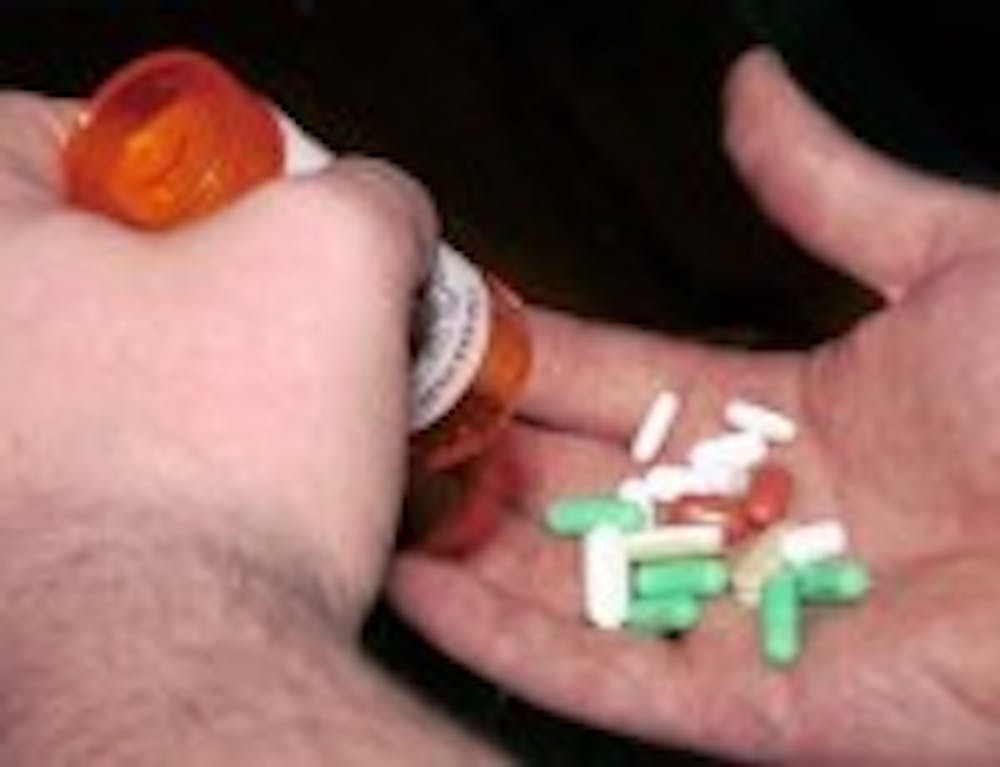At a joint conference between the Food and Drug Administration and the Substance Abuse and Mental Health Services Administration, the two organizations revealed that prescription drug abuse in the United States is on the rise.
The largest percentage of people reported to have used prescription drugs non-medically was in the 18- to 19-year-old bracket, where 15 percent had used prescription drugs recreationally in the past year. In the younger group of 12- to 17-year-olds, 7.9 percent reported having abused prescription drugs, while 12.1 percent of 18- to 25-year-olds were reported to have done the same.
"People regretfully think they're safer because they're not street drugs," said Leah Young, director of Media Services for SAMHSA. "They're made by pharmaceutical manufacturers and (people) don't realize the danger of them."
In 2001, nearly three million youth ages 12 to 17 had used prescription drugs non-medically during their lifetimes.
"There is a tendency for any people, in general, to regard medicine if it's prescribed by a health care provider as being okay and without addictive or abuse properties or potential," said Dr. Frank Carnevale, director of Health Services at the UB Student Wellness Center. "There is a natural tendency because it is legal to equate that as being safe and not addictive. That's not always the case."
Misuse of prescription drugs can lead to serious problems with addiction, misdiagnosis of serious illness, life-threatening circumstances and, in some cases, death, Young said.
"If you are abusing prescription drugs - using them recreationally, using them not under the close surveillance of a medical professional - you are putting yourself at risk for all the same things that you would be at risk for if you were using heroin," said Young. "People get addicted to them; people die. These are very, very strong medical substances that have really good medical uses, but they can really be dangerous if people play with them."
Mixing or using prescription drugs with alcohol can increase the risk. In 2001, multiple drugs were used in 72 percent of emergency department visits.
"Any time you mix medications, you increase the chance of there being drug interactions, and the drug affects can be (potent)," said Carnevale. "So one and one may not just equal two, it may equal more than that. Each drug has its own effect, but if you mix drugs, they have additional effects and that can cause further problems that can lead to an emergency room visit."
Emergency room visits for abuse of prescription drugs, specifically narcotic pain relievers, increased dramatically from 1994 to 2001, according to the Substance Abuse and Mental Health Services Administration Web site. Among the most popular prescription drugs being abused are oxycodone, which increased by 352 percent; methadone, which increased by 230 percent; morphine, which increased by 210 percent; and hydrocodone, which increased by 131 percent. The growing trend includes the abuse of prescription pain relievers, stimulants and tranquilizers.
"I think it's harmful, but it's their decision," said Dorian DiCocco, a sophomore mechanical engineering major. "If they want to do it, I'm not going to stand in the way. Unless it becomes like a problem, where I see them getting seriously hurt, then I'll stop them. But if I see them doing it just recreationally then I don't care."
These drugs can be acquired in a number of ways, according to Carnevale.
"Some of these individuals can get these medications from older family members. ... Others may steal medications from people they know or family members or friends," he said.
Andrew Echeverria, a sophomore civil engineering major, said he has had the opportunity to use prescription drugs for non-medicinal purposes, but he has not.
"My old roommates used to take Ritalin and crush it up and snort it. I always thought they were kind of a little crazy," he said.
Parker English, a sophomore mechanical engineering major, said using prescription drugs recreationally is "pretty unwise just because it's obviously not what it's supposed to be for. (People) usually take it to get more wasted than they already are."
The FDA and Substance Abuse and Mental Health Services Administration are teaming up to launch a public education effort to discourage prescription medication abuse. This will include public service announcements titled "The Buzz Takes Your Breath Away" and "It's To Die For," and a brochure titled, "The Buzz Takes Your Breath Away - Permanently."
Students, however, are skeptical about whether the efforts will be helpful.
"I don't think (public service announcements are) very effective," said DiCocco. "I think people will use them no matter what, with or without the public announcements."
Echeverria agrees.
"No one listens to it. There's so many of those that it doesn't really effect people anymore. ... If you look at a poster, you don't think anything of it anymore."
Cristie Beamer, a sophomore civil engineering major, disagrees.
"Just putting it out there kind of makes people aware of it. And if it gets to one out of 20 people's minds, then that's one person you saved as opposed to not saving any because you decided not to put them up there because it's a waste."
For more information about "The Buzz Takes Your Breath Away," "It's To Die For" and "The Buzz Takes Your Breath Away - Permanently," visit http://www.samhsa.gov or call (301) 443-0365.





